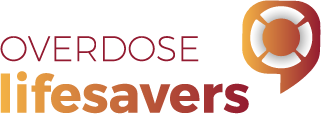The website content is based on 83 interviews. These were conducted with 46 people who consume opioids and 37 health professionals who encounter opioids and overdose issues in their work. All participants lived in Victoria and New South Wales, Australia.
Consumer participants range in age from 22 to 70 years old, and describe a variety of drug consumption experiences and perspectives on the issue of overdose. This website doesn’t focus on drug consumption specifically (see Lives of Substance for this). Rather the focus is on overdose and experiences of take-home naloxone. About one-third of the participants had experiences with take-home naloxone, others had heard of it but never used it, and some hadn’t heard of it until it was described in their interview.
To explore a broad range of experiences, we interviewed 28 participants who accessed opioids through illegal markets and 18 participants who accessed opioids on prescription to manage chronic pain. To aid clarity, the stories of each group have been clustered together. However, while there are important differences between them, there are similarities too. For example, both groups expressed concern about overdose, but only those who accessed opioids illicitly raised concerns about police encounters.
The 37 health professionals we interviewed worked in a range of relevant settings including pharmacies, general practices, chronic pain clinics, alcohol and other drug specialist services and other community health settings. Their experiences and views form the basis for the topic Health professionals’ reflections on take-home naloxone. As the website focuses primarily on personal experiences of responding to overdoses and using take-home naloxone, health professionals do not appear in the personal stories of this website.
Details of the people interviewed can be found here.
What can you expect to find on Overdose Lifesavers? By browsing our list of topics, you will find perspectives on and experiences of overdose, reflections on and experiences of take-home naloxone, discussions of barriers to accessing take-home naloxone, health professionals’ opinions about it, and other key issues. In our collection of overdose stories, you’ll find detailed descriptions of personal overdose experiences, about half of which involves the use of take-home naloxone. Some stories highlight the life-saving work already being done by people who consume opioids. These narratives also provide insights into what it’s like to use or receive naloxone outside a medical setting, and what happens afterwards.
While the project on which this website is based aimed to gather a range of experiences, the content doesn’t include all experiences.
We hope you find Overdose Lifesavers helpful and informative.


